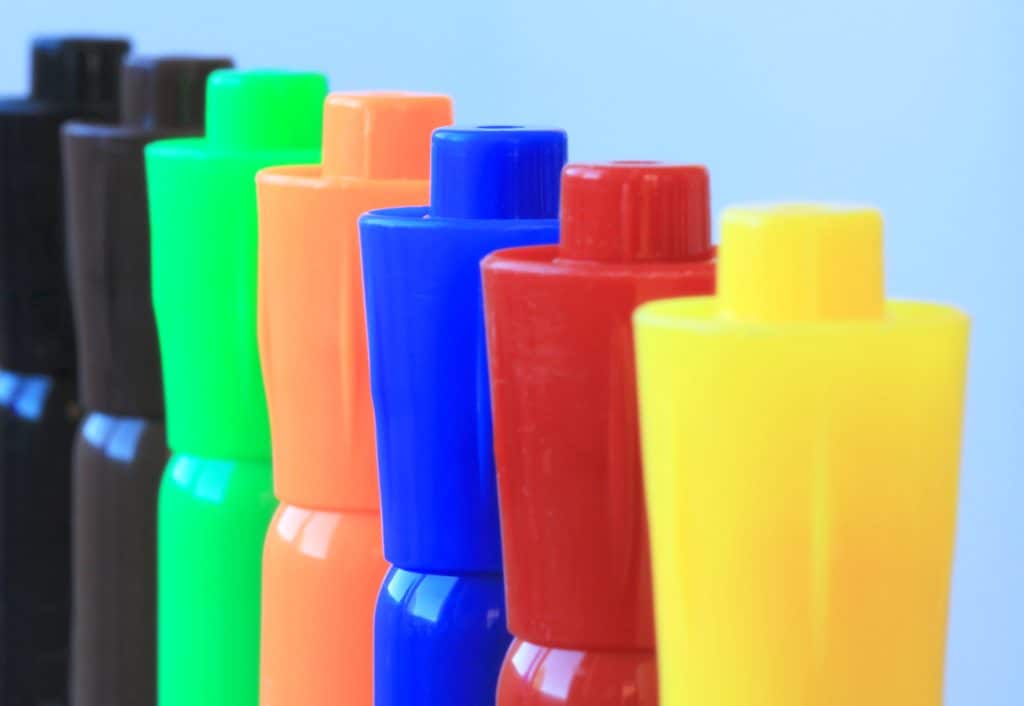Table of Contents
Children enjoy getting creative with color, while parents prefer keeping the color in the right places and efficiently removing it from the wrong places. Washable markers provide the perfect balance for children to sharpen their creativity without leaving marker stains on clothing, walls, or skin.
Washable markers are markers you can wash off from walls, clothing, and skin using water and soap. They are innovatively formulated, water-based markers with a distinctive formulation that minimizes ink stains, making them popular choices for children and toddlers (source: Art New York).
Marker stains can ruin walls and clothing, especially if they are light-colored. You are probably curious about what it means for a marker to be washable, what felt markers are, and what ingredients are in washable markers. Read this article and get the answers to these questions.

What Does It Mean If a Marker Is Washable?
If a marker is washable, you can easily remove the marks from skin, clothes, tables, and walls by wiping the surface with a wet sponge. Sometimes you need to remove the spots using baby oil, makeup remover, or baby wipes.
The color pigments are usually added to water-based mediums to make washable markers. The ink resins are highly water-soluble, allowing them to separate and run or dissolve when you expose them to water, even when they are dry.
They are easier to remove and clean up from the skin, fabrics, and other surfaces because the colors are water-based (source: Children’s Museum).
Washable markers are a perfect choice for classroom and home use because they do not stain surfaces permanently. They are the preferred drawing tools for children who often stain their bodies and clothing with markers (source: Transparency Market Research).
You can easily remove stains from washable markers from walls, skin, and clothes by simply wiping the surface with a wet sponge. These markers are ideal for children because they are also non-toxic. You can purchase them from the following vendors:
- Online stores
- Discount stores
- Supermarkets
- Other places that sell drawing materials for children (source: Home Questions Answered).
I recommend these Crayola Ultra Clean Washable Markers from Amazon. This set provides 40 colors to choose from, and the markers have fine tips perfect for anyone hoping to create more intricate details.
What Are Washable Felt Markers?
Washable felt markers are markers with a thick, felt nib, and use water-soluble ink that washes off clothes, skin, and other surfaces. They come in different tip sizes, so you can use them to write, draw, color, or highlight. They are incredibly versatile, making them ideal for expressing your style.

You can use washable felt markers for drawing and writing on a large scale. They create both thin and thick lines of smooth, intense color; therefore, they are more expressive than regular pens.
They are ideal for home and as supplies for school projects because they add color to even the smallest details in your creative projects.
Washable felt markers come ready to use, paint reliably in any color, and dry quickly. They apply color evenly, and you can use them for the following types of projects:
- Comics
- Coloring
- Sketching
- Mixing colors
The color does not bleed, which is an advantage, especially if you use markers in notebooks.
Best uses for washable felt markers include:
- Drawing and coloring: Washable felt markers are popular items among drawing and coloring fans because of their availability in various tip sizes and colors.
The felt tips create a free flow of ink, producing smooth, even lines with high color concentration that make for bright, bold art projects. - Labeling: Washable felt markers come in various colors, which are ideal for color-coding files. Fine-tipped markers are suitable for small spaces, while broad-tipped pens are best for bigger letters.
However, do not use washable felt markers on surfaces that will come into contact with water. - Note-taking: The color variety in washable felt markers makes them an excellent choice for highlighting and color-coding notes.
When taking notes, use thin-tipped markers—broad tips are prone to feathering when you write small. Also, if you are left-handed, quick-drying ink is best to avoid smudging (source: Quill.com).
What Are Washable Markers Made Of?
Washable markers are made of five elements: a water-based color mix of dyes and water, an absorbent plastic nib, a plastic barrel, a cotton filament, and a plastic cap.
The plastic parts are made of recycled resin, taking over one million pounds of plastic out of landfills. (sources: Crayola and The Chemistry of Markers).
Traditional permanent markers contain the following substances:

- resin polymer
- an alcohol solvent
- a pigment colorant
However, washable markers use the following to prevent the color from adhering to surfaces:
- carboxylates and carboxylic acids
- food-coloring dyes
- water-based solvents
The markers do not look like watercolors; instead, they present dark, vibrant colors (source: Homesteady).
The pigments that produce these water-based sets, also known as washable markers, combine water and powders. The manufacturers then store the washable paint in bottles that work as mediums of distribution for water-based formulations.
These paints are easier to remove than traditional ink because the pigments dissolve quicker when they come into contact with water, even when they are dry (source: Choose Marker).
Drawing with washable markers is one way anybody can be creative with bold colors. You can freely express yourself and be confident that your artwork will not destroy clothes, surfaces, or walls.










